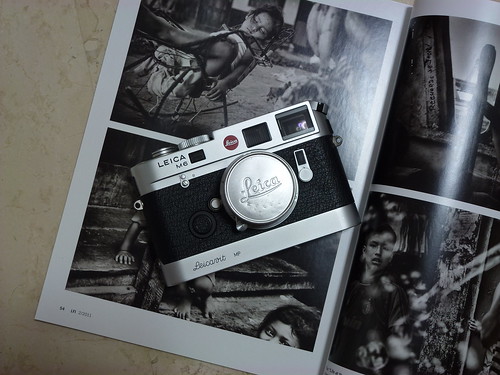[May·2011] Leica announced its new digital compact camera – the Leica V-Lux 30. The new universal compact camera features a 15.1 megapixel sensor (14.1 MP effective) and a Leica DC Vario-Elmar 4.3 - 68.8 mm f/3.3 - 5.9 ASPH, equivalent to 24 to 384 mm in 35-mm format.

Leica V-Lux 30
The Leica V-Lux 30 has a near identical twin in the Panasonic Lumix DMC-TZ20 (Travel Zoom series), which was announced in Jan'11. Leica now pitches its stylish V-Lux 30 in the mix of travel zooms compacts, offering a very useful 24mm wide angle, 16x zoom range, AVCHD Full HD movie recording, 3" touch screen LCD screen, and built-in GPS, making a very compelling case for it as an ideal traveling companion.
Highlights
- Leica DC Vario-Elmar 4.3 - 68.8 mm f/3.3 - 5.9 ASPH (16x), with Optical Image Stabilization
- 24mm wide angle
- new 1/2.33" CMOS sensor
- 1080i-AVCHD Full HD with integrated stereo microphone
- new 3D mode (MPO format)
- 3" LCD touch screen display (460,000 pixels)
- integrated GPS function
The Leica V-Lux 30 comes complete with Adobe® Photoshop® Elements 9 for still image processing, Adobe® Premiere® Elements 9 for video processing, and a 2-year international warranty. The stylish design of the Leica V-Lux 30, in elegant black matt finish complete with the Leica "red dot", can be further complemented by the optional Leica strong leather or soft leather cases (brown).

Leica V-Lux 30
The Leica V-Lux 30 has a near identical twin in the Panasonic Lumix DMC-TZ20 (Travel Zoom series), which was announced in Jan'11. Leica now pitches its stylish V-Lux 30 in the mix of travel zooms compacts, offering a very useful 24mm wide angle, 16x zoom range, AVCHD Full HD movie recording, 3" touch screen LCD screen, and built-in GPS, making a very compelling case for it as an ideal traveling companion.
Highlights
- Leica DC Vario-Elmar 4.3 - 68.8 mm f/3.3 - 5.9 ASPH (16x), with Optical Image Stabilization
- 24mm wide angle
- new 1/2.33" CMOS sensor
- 1080i-AVCHD Full HD with integrated stereo microphone
- new 3D mode (MPO format)
- 3" LCD touch screen display (460,000 pixels)
- integrated GPS function
The Leica V-Lux 30 comes complete with Adobe® Photoshop® Elements 9 for still image processing, Adobe® Premiere® Elements 9 for video processing, and a 2-year international warranty. The stylish design of the Leica V-Lux 30, in elegant black matt finish complete with the Leica "red dot", can be further complemented by the optional Leica strong leather or soft leather cases (brown).
Last edited:






































